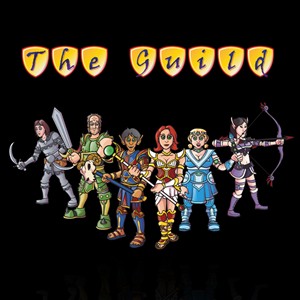 “Welcome to the Hellmouth”
“Welcome to the Hellmouth”
There have been numerous articles in the last few years declaring that geeks are now cool. Shows like Big Bang Theory and Glee are held up as proof of this trend. It’s not the Marcia Bradys or the Mike Seavers we want to root for anymore. We love outcasts and braniacs. ComicCon isn’t just for Trekkers anymore. When did the tide turn? My first answer would be with Veronica Mars. But thinking back, there was Freaks and Geeks—short-lived as it was. But, wait. Even before that, there was Buffy. She may have been the original cool social reject; it helped that she was hot.
So imagine it’s 1997. Buffy the Vampire Slayer is a campy film starring Kristy Swanson that you may remember from earlier in the decade. Joss Whedon is not a name you hear regularly, if at all (did you know he was a writer on Toy Story?), and you’ve certainly never heard of a Whedonverse.
The stage, complete with eerie horror movie music, is set when a horny teenage couple break into the high school, apparently to get it on, but—oops—the perky blond chick is a vampire who changes and brutally kills the guy. (Sucks to be that actor. Congratulations, you landed a part in what promises to be a hit teen drama. But you die in the first two minutes.)
For those not familiar with slayerism, the opening credits and voiceover give the gist; in every generation, there is a chosen one, etc., etc. Here, Buffy is the fresh-faced Sarah Michelle Gellar, known mainly as a soap actress.
Buffy’s mom drops her off at her new school in fictitious Sunnydale, CA, where she has apparently transferred following the events of the film. And wouldn’t you know it? Sunnydale is smack on top of the Hellmouth, a portal to all things occult. On Buffy’s very first day, a body turns up in a locker with telltale bite marks on its neck. But we’ll get back to that…
In addition to introducing Hellmouth-adjacent life, the pilot takes as its storyline a typical teenage tale; Buffy’s attempt to fit in with the cool crowd, only to find that she is destined to walk among the outcasts. She approaches her new school with hope for normalcy, but nevertheless carries a sharpened wooden stake in her bag. (“Pepper spray is just so passé.”)
She first befriends the self-centered beauty queen Cordelia (Charisma Carpenter), who picks on the brainy Willow (Alyson Hannigan). Meanwhile, charmingly awkward Xander (Nicholas Brendon) can’t keep his eyes off of Buffy. Willow likes Xander. Mr. Giles (Anthony Head), new librarian in the apparently deserted school library, seems to already know all about Buffy’s slaying ways. So she goes to him when she learns about the locker body.
Vampires live under the city and are gearing up for some huge revolt, called The Harvest. So Buffy’s going to have a busy sophomore year, what with cheerleading, homework, and ass-kicking.
Oh, and I did I mention there is a dark and mysterious, and ridiculously hot guy trailing Buffy around town? We don’t get a name, or much information at all, except that he knows what’s up with the Harvest.
So the pilot gets us off and running with plenty of action, love triangleism, and more on the mysterious guy (who will, of course, be introduced later in the series as Angel), to look forward to. It’s a bit dark, often funny, and has enough eye candy to get addictive. And this is all despite the fact that, objectively speaking, it’s kind of bad. The acting, the dialogue… but stuff can be bad and still plenty entertaining. Just look at the original Star Wars.
For added fun, there is an unaired version of Welcome to the Hellmouth floating around the ‘net.
Memorable quote: (Said all SoCal bitchy) “God, what is your childhood trauma?”
 In honor of today’s rumors that Scott Baio has died, something that happens now with some regularity, and with #RIPScottBaio trending on Twitter worldwide, it seemed like a good time to blog about the pilot of a beloved ’80s sitcom, Charles in Charge. Just the title conjurs the tinkly sound of the theme song in your head, doesn’t it?
In honor of today’s rumors that Scott Baio has died, something that happens now with some regularity, and with #RIPScottBaio trending on Twitter worldwide, it seemed like a good time to blog about the pilot of a beloved ’80s sitcom, Charles in Charge. Just the title conjurs the tinkly sound of the theme song in your head, doesn’t it?




